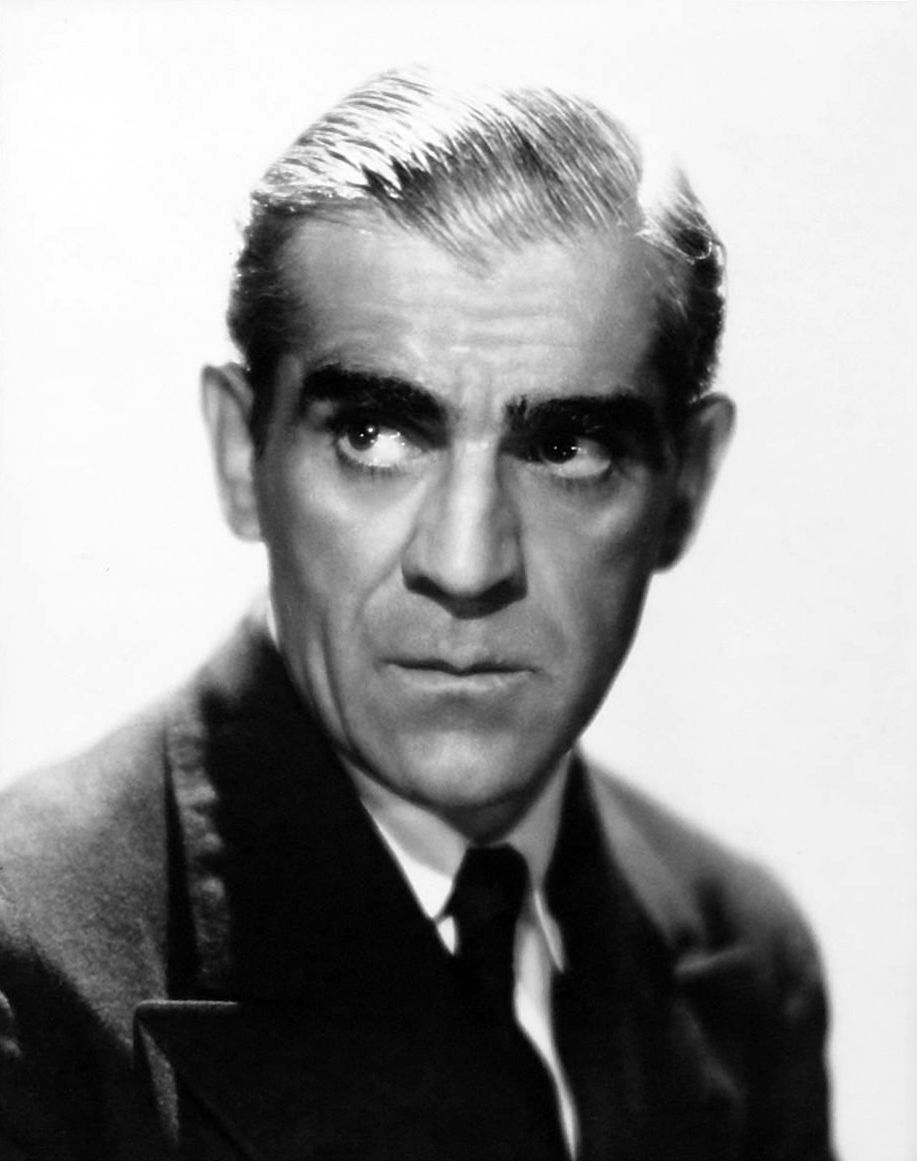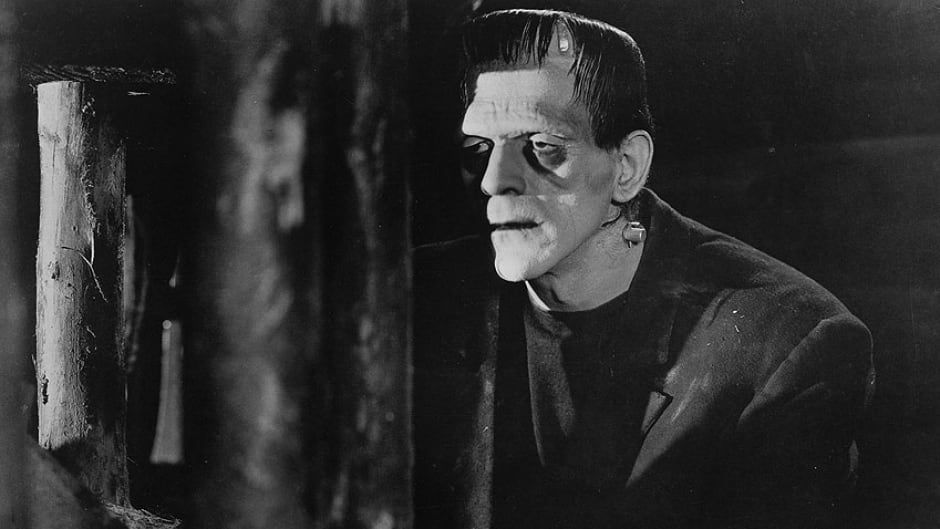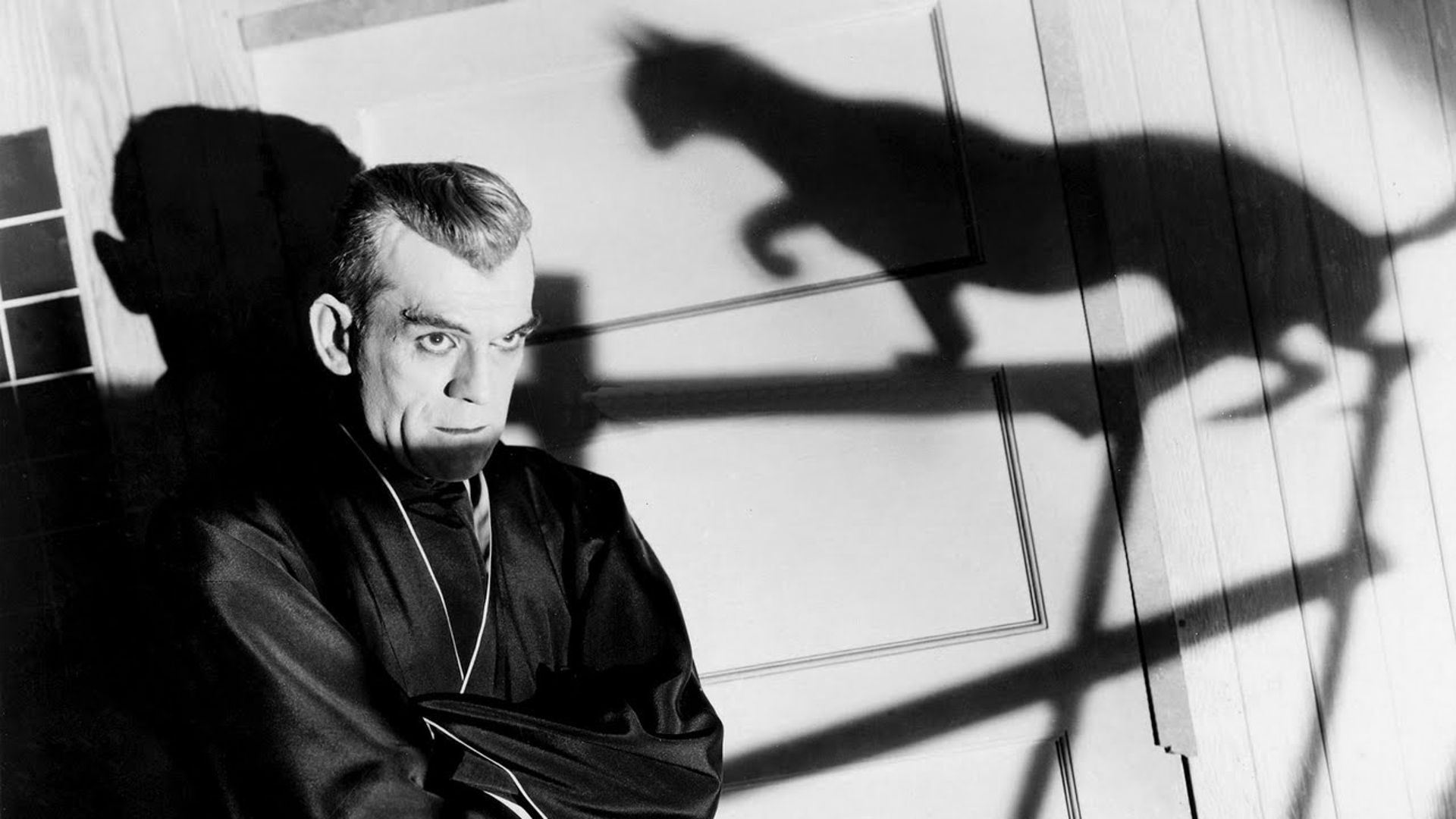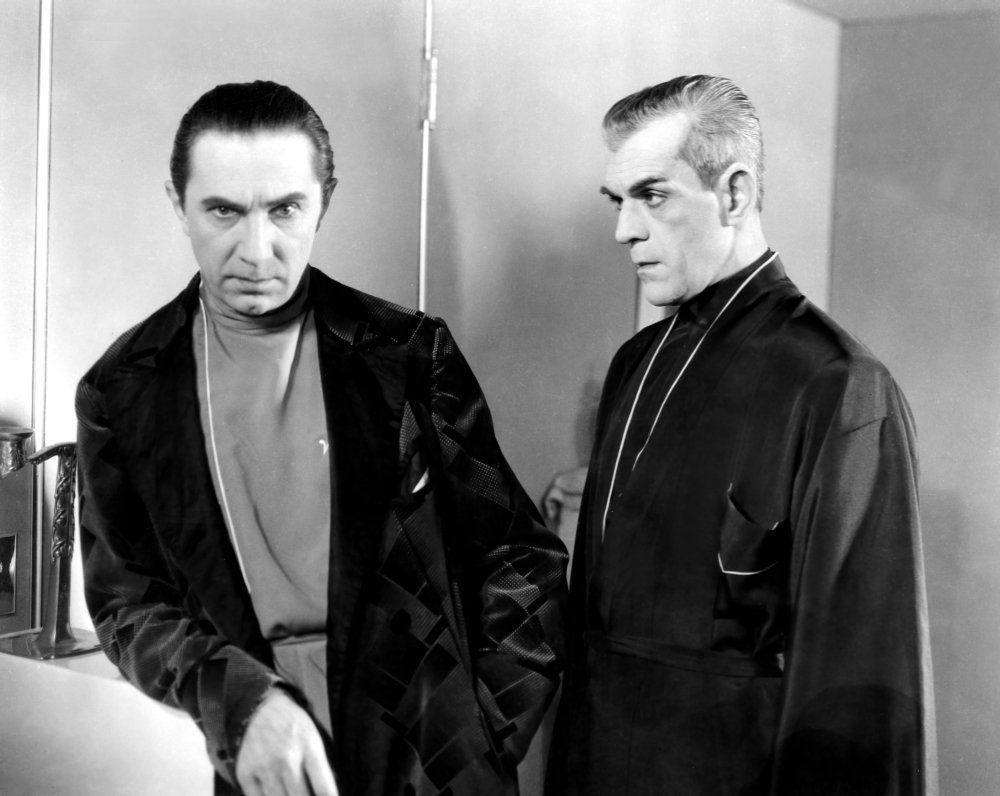Icons of Horror: Boris Karloff: Part 1

BORIS KARLOFF
William Henry Pratt November 23, 1887 - February 2, 1969
“The Monster was the best friend I ever had.”
There have been many fine portrayals of Dracula, the Phantom of the Opera, Jekyll and Hyde and other classic horror characters but when it comes to the Frankenstein Monster, Boris Karloff stands as unquestionably the greatest actor ever to essay the role. That such a gentle and sensitive personage, on and off screen, would not only make his mark in the horror genre but also become its virtual avatar is surprising. In the multifarious roles Karloff portrayed over the course of more than thirty years he, more so than any actor on record, can lay claim to being Lon Chaney’s true successor.
William Henry Pratt was born into a well to do Anglo-Indian family in the heart of what was then Queen Victoria’s Empire, the South London district of Dulwich (sometimes said to be Camberwell, but stated as Dulwich by Karloff in his THIS IS YOUR LIFE appearance). His family had a long tradition in the British civil services in India, and it is likely that both of Karloff’s parents had mixed European and Asian ancestry. The young William was, like his brothers, reared to follow in the familial footsteps toward a career in His Majesty’s Diplomatic Service or some related calling, but a role in a children’s production of Cinderella would change the course of his life. The nine year old boy who would become Boris Karloff made his stage debut as the Demon King and, as the actor himself would later say, “it launched me on a long and happy life of being a monster.”
In 1909, having withdrawn from King’s College, William Pratt decided to cast caution to the winds and try to make a living doing what he loved best. He bid his family a temporary farewell and set sail - not for Hollywood, but for Canada. For the next few years, Karloff appeared on Canadian stages from Quebec to British Columbia, supporting himself with what manual labor and truck driving jobs he could find. It was in this timeframe too that Pratt rechristened himself Boris Karloff, “Boris” being simply plucked from thin air and “Karloff” taken from a name in his mother’s family tree. Karloff made his way to the United States and eventually, via theatrical touring companies, to California and the booming film industry.
Appearing in small roles from as early as 1919, Karloff stayed on in California and decided on a career as a film actor. He would appear in an adaptation of James Fenimore Cooper’s THE LAST OF THE MOHICANS in 1920; by an amazing coincidence, half a world away in Germany, a rising star named Bela Lugosi was filming an adaptation of the very same story, the very same year. Karloff rose from bit parts to featured roles over the next several years. An especially notable early film was the Edgar Allan Poe-inspired THE BELLS (1926), starring Lionel Barrymore as a murderous innkeeper troubled by his avenging conscience. Karloff played a carnival mesmerist in makeup and attire strongly suggestive of Werner Krauss in THE CABINET OF DR. CALIGARI (1920), and it is his character who plays a large role in Barrymore’s undoing.
The coming of sound film saw Karloff continuing in the vein he’d established in the silent era, portraying a number of smallish parts as characters of disparate ethnicities. In this era it was a given that actors display their range by essaying such roles; the career of Lon Chaney was liberally sprinkled with portrayals of Chinese, Native American and mixed race men. A noteworthy role in Howard Hawks’ THE CRIMINAL CODE (1931) as prison trusty Galloway garnered good notices for Karloff and for a time he specialized in gangster parts.

During the production of one of these for Universal, GRAFT (1931), Karloff was spotted by director James Whale in the studio commissary. Whale was then preparing to film an adaptation of Mary Shelley’s Frankenstein. The director had previously impressed with his version of JOURNEY’S END (1930), starring future horror icons Colin Clive and David Manners, and consequently Universal gave Whale his choice of material to film. FRANKENSTEIN was, as Whale put it, “the strongest meat and gave me a chance to dabble in the macabre.” Karloff, though a bit thinner than Whale would have liked, possessed exactly the sort of face and eyes Whale was searching for in his Monster. Carl Laemmle Jr. had initially earmarked the role of the Frankenstein Monster for Bela Lugosi on the heels of the tremendous success of DRACULA (1931) but the actor balked at the role. It should be remembered, however, that Lugosi did not turn down the script Whale eventually filmed, but rather an earlier draft by Robert Florey in which the Monster was “chalky white, and expressionless” or as Lugosi put it, “a scarecrow”.
The role of the Frankenstein Monster proved to be an arduous one for Karloff. The process of applying and removing the elaborate makeup, designed by Jack Pierce with contributions from Whale and Karloff, required the actor to endure long hours in Pierce’s chair. In addition he was fitted with heavy boots and a padded suit to increase his menacing profile. The film’s climax, in which the Monster carries his creator Henry Frankenstein (Colin Clive) into a windmill, aggravated the back problems begun years ago with the heavy manual labor jobs Karloff endured whilst in Canada. The resultant film was a huge success however and Karloff, billed at the start of the film only with a question mark, now joined Bela Lugosi in the ranks of filmland’s foremost bogeymen.


A few gangster roles were still in the offing before horror entirely took over Karloff’s career however. 1932 saw the actor effectively portray Gaffney, a foredoomed rival to Paul Muni’s psychopathic SCARFACE and a club owner with nefarious associations in Universal’s NIGHT WORLD. But from the release of Whale’s THE OLD DARK HOUSE (1932) onward, the actor would find himself inextricably linked to the macabre. HOUSE is one of Whale’s most delicious films and offers a glorious role for Ernest Thesiger as paterfamilias Horace Femm, presiding over a houseful of human monsters in the Welsh hinterlands, but Karloff is largely sidelined as the mute, hulking butler Morgan. Karloff ventured into the plush surrounds of MGM for THE MASK OF FU MANCHU (1932), portraying Sax Rohmer’s superfiend with a considerable degree of relish alongside Myrna Loy as his sadomasochistic daughter Fah Lo See.
Universal continued to break horrific ground with Karl Freund’s THE MUMMY (1932), in which Karloff starred as ancient Egyptian Im-Ho-Tep, stirred to life by British explorers and subsequently assuming the identity of Ardeth Bey. The opening sequence, building from disquiet to frenzy, is a masterpiece of screen terror. In 1933 Karloff returned to England for THE GHOUL, a creepy and atmospheric piece directed by T. Hayes Hunter and co-starring Ernest Thesiger. During this time he reunited with his brothers, all highly placed members of the British diplomatic service, who were delighted to have a bona fide screen star in the family. Back in Hollywood he continued his string of excellent performances in films such as THE LOST PATROL (1934) and THE HOUSE OF ROTHSCHILD (1934), the latter seeing Karloff play the nefarious Count Ledrantz of Prussia, a character whose anti-Semitic attitudes toward Nathan Rothschild (George Arliss) reflected the sort of violent pogroms then beginning in Hitler’s Germany.
Universal Horror was entering into its most fruitful period at this point and Karloff would unite with Bela Lugosi for one of the most perverse and artfully realized films of Hollywood’s Golden Age, THE BLACK CAT (1934). It was here, and only here, wherein both actors were given roles of equal importance and both rise to the occasion by delivering a pair of superb performances. Karloff essayed the role of Hjalmar Poelzig, a Satanist, modernist architect and former Austrian army officer of the Great War who hosts his former fellow soldier, now Hungary’s foremost psychiatrist, Dr. Vitus Werdegast (Lugosi), and two American honeymooners (David Manners and Jacqueline Wells) in the midst of inclement weather. Poelzig betrayed his unit to the enemy in order to save himself, resulting in Werdegast and all other men under his command languishing in a notorious Russian prison camp “where the soul is killed slowly” if they were not slaughtered outright. Poelzig has built his home on the ruins of the same fort he commanded during the war, which now serves as the base for his black magic operations involving human sacrifice. Karloff, an Art Deco demon if there ever was one with his sharp widow’s peak and black satin dressing gowns, delivers a performance laden with insouciant menace and purring diction. Is he the “black cat” of the title? Lugosi too is in top form as the tormented Werdegast, with the actor’s own experience in the army of Austria-Hungary no doubt playing its role in the authenticity of his performance. Director Edgar G. Ulmer seemed poised to follow in the footsteps of Tod Browning and James Whale at Universal but a major scandal ensured he would spend the rest of his career laboring in the darkest alleyways of Poverty Row.


Whale, for his part, had no further interest in making horror films but before bidding the genre adieu he was persuaded by Carl Laemmle Jr. to make a sequel to FRANKENSTEIN. Seeking to differentiate this second go-around from its predecessor, Whale infused THE BRIDE OF FRANKENSTEIN (1935) with a funerary wit largely delivered by Ernest Thesiger’s fruitily eccentric alchemist Dr. Pretorius, a disgraced professor who cajoles his former student Henry Frankenstein (Clive) to construct a female counterpart to Karloff’s Monster. BRIDE finds Karloff at the peak of his abilities as an actor and though, against Karloff’s wishes, the Monster does acquire the power of speech this time, the actor’s ability to evoke sympathy with simple body movements again compares favorably with that of Lon Chaney.
THE RAVEN (1935) was another teaming of Karloff and Lugosi with elements of Poe, but whereas THE BLACK CAT had been a masterful synthesis of music, design and performance, THE RAVEN takes its inspiration from the blood and thunder pulps of the day. In its way, on this different level, the film succeeds marvelously and gives Lugosi one of his juiciest roles as Poe-obsessed surgeon Dr. Vollin, with Karloff as the pathetic hoodlum he disfigures as part of an elaborate scheme of revenge. Karloff understandably disdained the film, probably as much for its delirious sadism as the reduced role he played in it. THE RAVEN had far-reaching implications in that it so appalled the British censor that a ban on American horror films was enacted. The loss of this important overseas market combined with some recent horror films underperforming at the box office would put a damper on their production after 1936.
But there were still a few horror films in the offing for Karloff before the ban took effect, including a marvelous dual role for Columbia, THE BLACK ROOM (1935). Here he portrayed twin brothers Anton and Gregor de Berghmann, the former a mild-mannered humanitarian who is killed by the latter, a depraved despot, in order to assume his identity. For Warner Bros. he starred in Michael Curtiz’s THE WALKING DEAD (1936), again impressing as a man wrongfully sent to the electric chair who returns to haunt the gangsters responsible for his death. And Universal offered another Karloff and Lugosi team-up in the form of THE INVISIBLE RAY (1936). Here, in contrast to THE RAVEN, Karloff unquestionably dominates as the weird Dr. Rukh, venturing to Africa to discover, and be contaminated by, a meteorite possessing otherworldly properties. Lugosi is sidelined with the supporting role of Dr. Benet, a rival to Rukh who finds himself on the receiving end of the glowing ghoul’s poisonous touch. Rather than Poe, THE INVISIBLE RAY and its preoccupation with cosmic horror derive inspiration from H. P. Lovecraft in general and The Colour Out of Space in particular.
As Hollywood turned its face from horror Karloff found himself enacting the kinds of multiethnic character parts he’d played in the silent era but now as a highly paid and internationally recognized film star. For Warner Bros. he appeared in THE INVISIBLE MENACE (1938) and DEVIL’S ISLAND (1939), neither one a horror film despite their titles. Karloff was offered the chance to headline his own detective series by cut-rate Monogram, with MR. WONG, DETECTIVE (1938) being the studio’s attempt to cash in on the success of Fox’s Charlie Chan and Mr. Moto. The first film was a clever and intriguing mystery but the five films that followed sank increasingly into dull formula. For the last, PHANTOM OF CHINATOWN (1940), Karloff was swapped out in favor of Keye Luke. This was due to a revival of interest in horror films brought about by the smash success of revivals of the early 30s output of Karloff and Lugosi. The studios took notice and consequently Monogram’s final Karloff vehicle would be a horror outing entitled THE APE (1940). Here the actor’s sensitive performance enhances a typically demented Monogram plot. He portrays grandfatherly Dr. Adrian who, in order to procure the spinal fluid necessary to his polio vaccine, dons the hide of a deceased circus gorilla and sallies forth in search of unwilling donors.
Meanwhile at the New Universal, the Laemmles having sold the company in 1936, plans were made to continue the Frankenstein series with a lavish new entry, initially envisioned to be shot in Technicolor, directed by Rowland V. Lee. Colin Clive, long troubled by ill health, had passed away in 1937 so this entry would feature the son of Henry Frankenstein (here Germanized to Heinrich von Frankenstein) carrying on the family tradition. The resultant film, SON OF FRANKENSTEIN (1939), would feature Basil Rathbone as Wolf von Frankenstein, Bela Lugosi creating a classic archetype in the macabre Ygor, Lionel Atwill as the embittered Inspector Krogh, whose fetishistic fumblings with his wooden arm recall some of Lon Chaney’s classic characters, and of course Karloff as the Monster. For this, the longest and most elaborate film in the Universal series, the reintroduction of the Monster is carefully and menacingly built up to, with the creature initially in a dormant state before being revived to carry out Ygor’s plans of revenge. Though the Monster in this film largely functions as a tool of Ygor, Karloff finds some wonderful moments of pathos nonetheless. The scene in which the Monster sees himself in a mirror, comparing his own twisted visage with that of Wolf, and the Monster discovering the corpse of his friend Ygor, resulting in a wail of anguish, linger in the mind. Karloff decided to retire from the role after SON, fearing that the Monster was destined to suffer indignities of one sort or another should the series continue. It also was during the filming of SON that Karloff’s fifth wife Dorothy gave birth to the actor’s only child, Sara.
With horror back in vogue on the cusp of World War II, Karloff was busier than ever in projects of variable quality. THE MAN THEY COULD NOT HANG (1939) began what was informally called the “Mad Doctor Series” at Columbia, each featuring Karloff as a scientist whose professional curiosity leads invariably to disaster. The films are generally excellent and display some of Karloff’s best work. THE MAN THEY COULD NOT HANG is probably the best, with its Agatha Christie-inspired climax. THE MAN WITH NINE LIVES (1940), BEFORE I HANG (1940) and THE DEVIL COMMANDS (1941) followed. One more was trotted out several months later, a forgettable farce that squanders the talents of Karloff and Peter Lorre called THE BOOGIE MAN WILL GET YOU (1942). This last film was made to order on the heels of a successful Broadway production Karloff had appeared in called Arsenic and Old Lace. The actor showed a long-neglected facility for comedy in the role of psychopathic Jonathan Brewster, who once killed a man for suggesting that he resembled Boris Karloff.
Universal, in the full throes of a second monster cycle spurred on by SON OF FRAKENSTEIN, signed Karloff for a two-picture deal after his Broadway stint ended. The first film resulting from this was THE CLIMAX (1944), an unofficial followup to the studio’s PHANTOM OF THE OPERA (1943), with Karloff as Dr. Hohner, an opera physician who maintains a necrophiliac interest in his deceased wife in addition to setting murderous sights on diva Suzanna Foster. HOUSE OF FRANKENSTEIN (1944) meanwhile was a monster rally featuring Karloff as mad Dr. Niemann, Dracula (John Carradine), the Wolf Man (Lon Chaney Jr.), a hunchback (J. Carrol Naish) and the Frankenstein Monster, now and for the remainder of the series played by cowboy actor Glenn Strange. Strange’s face and build suit the character magnificently (and it was the craggy visage of Strange rather than Karloff that would decorate all manner of monster merchandise from the 1950s onward) but he brings none of Karloff’s delicate pathos to the role. The Monster was now, as Karloff had predicted in 1939, just a prop to be revived and as quickly destroyed in the final reel.
To Be Continued…



